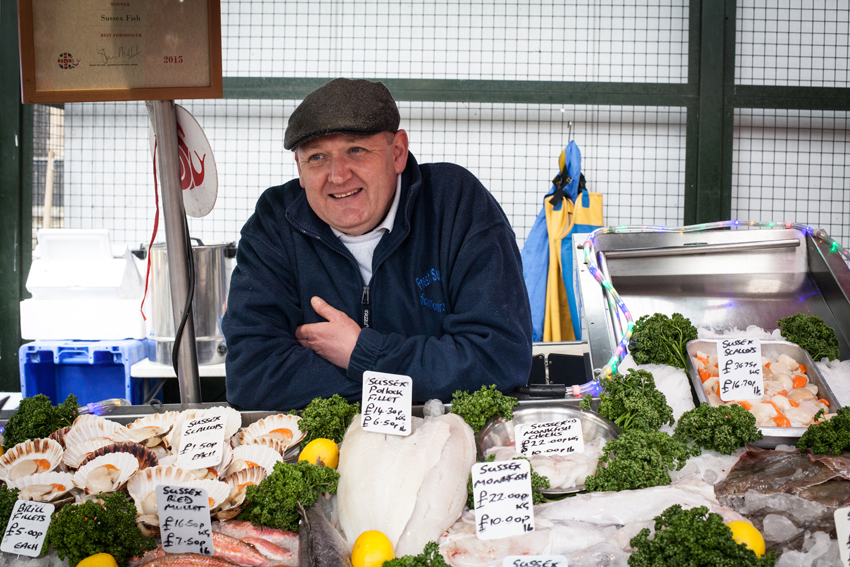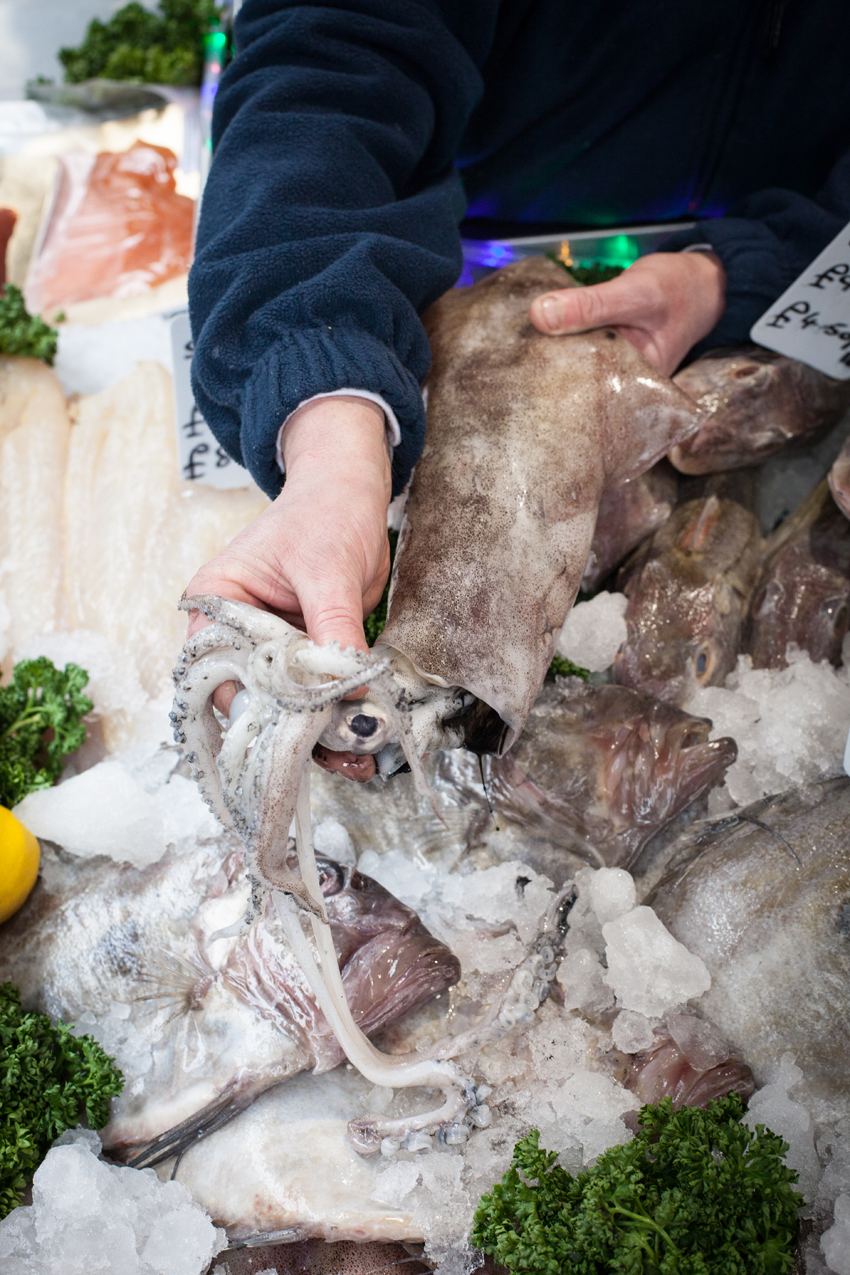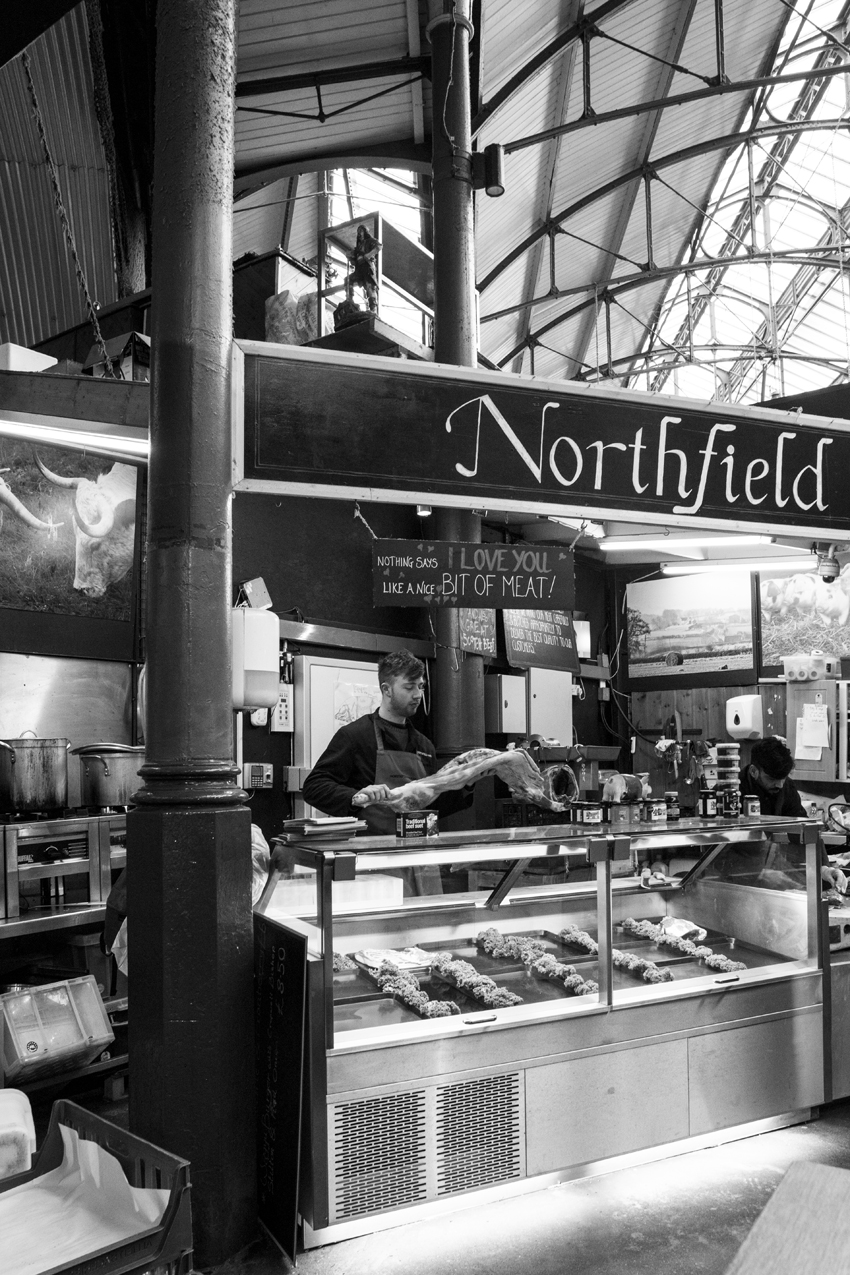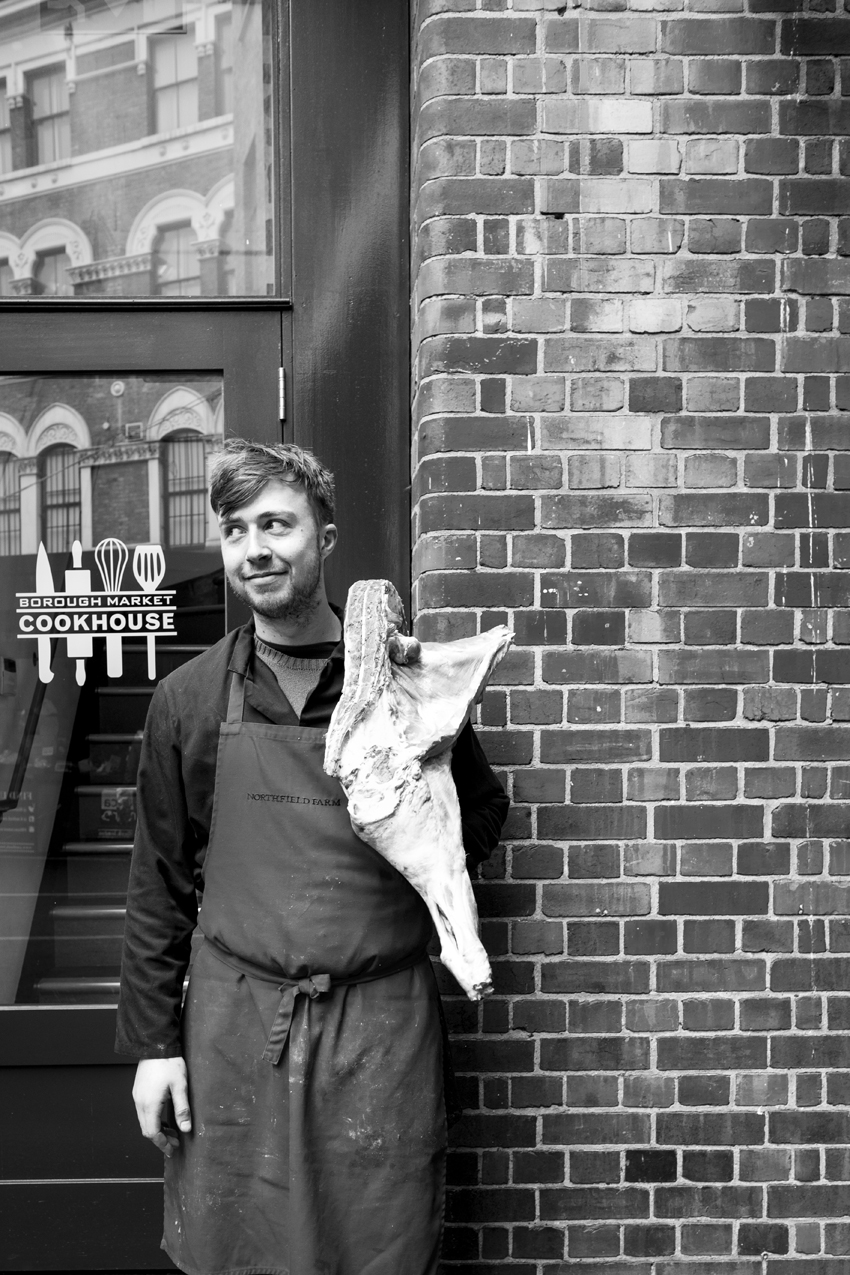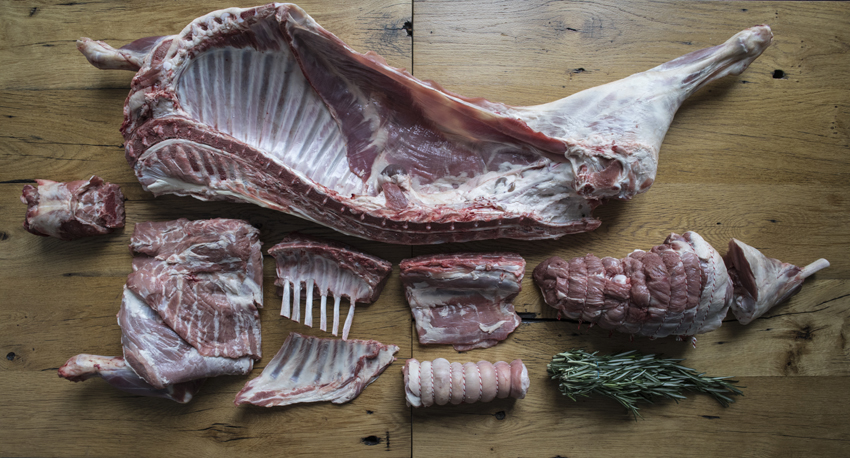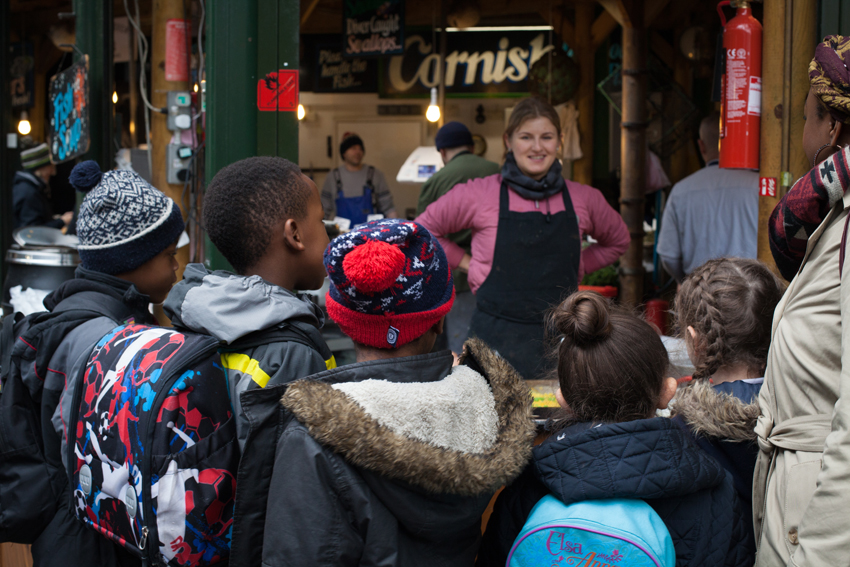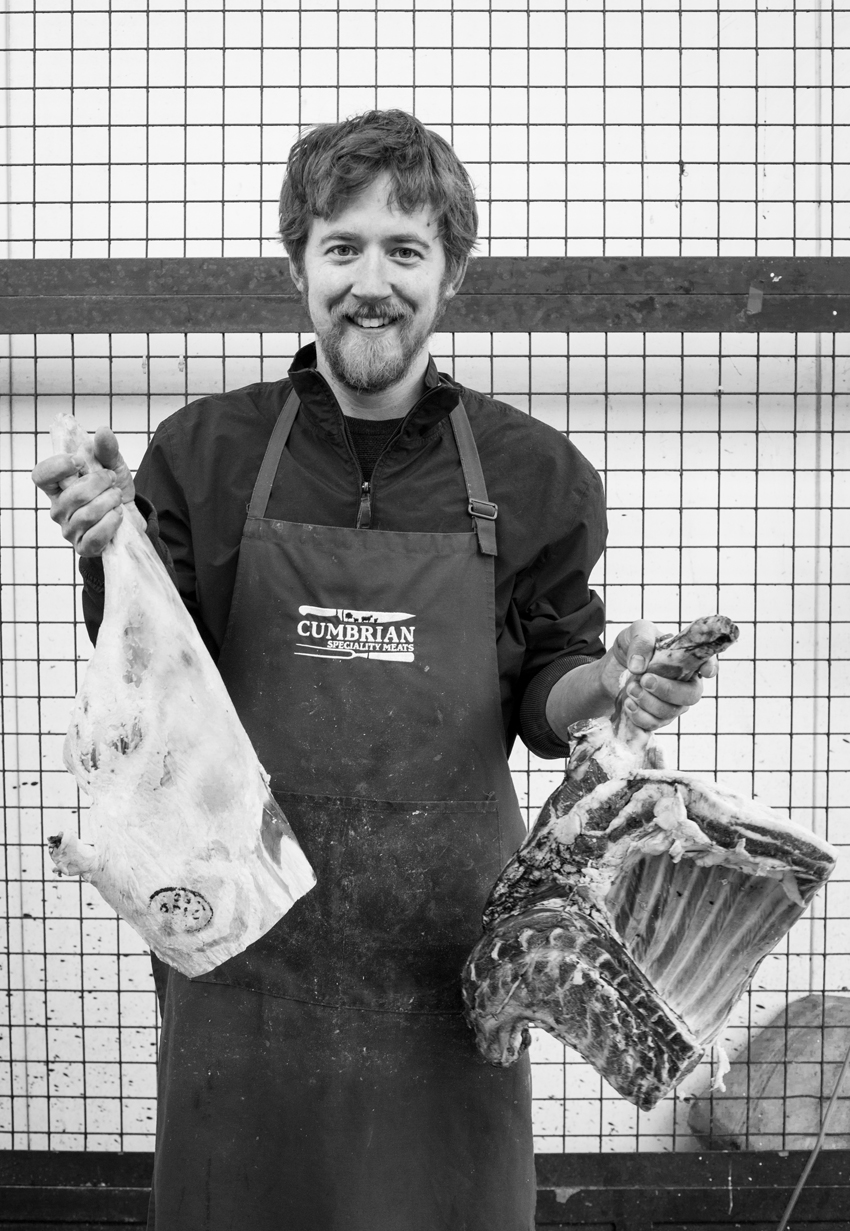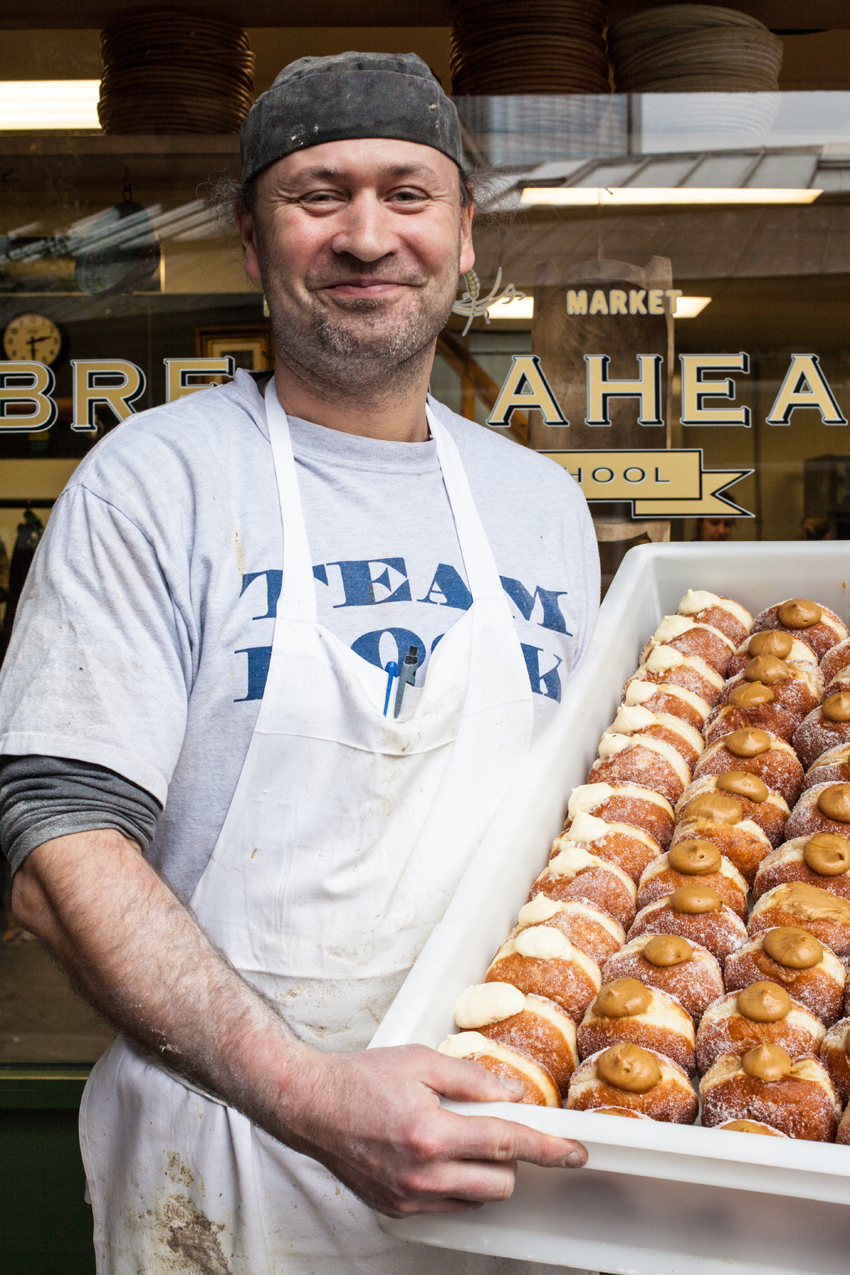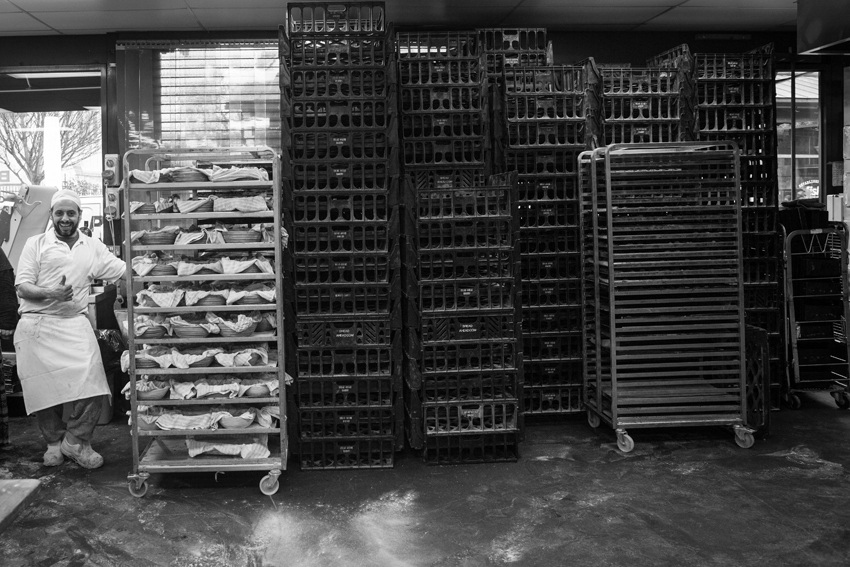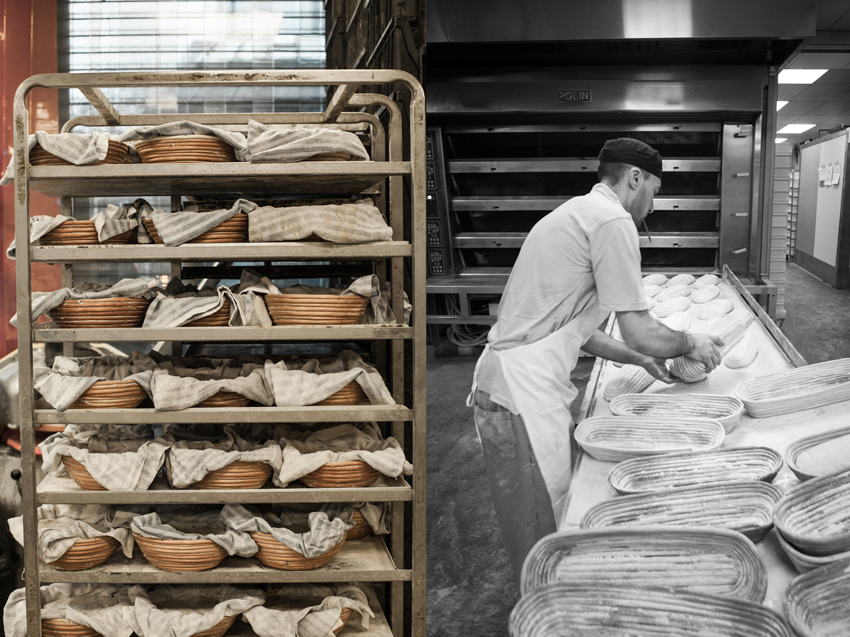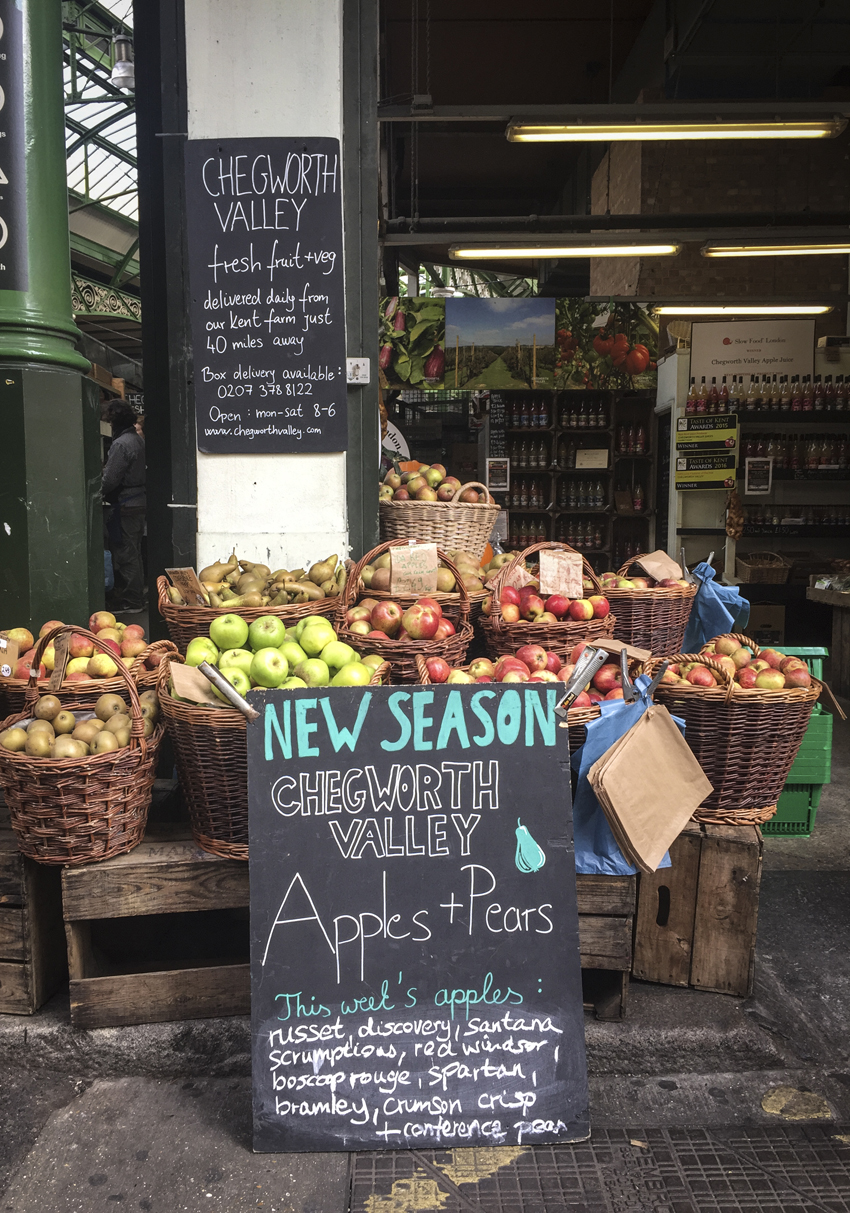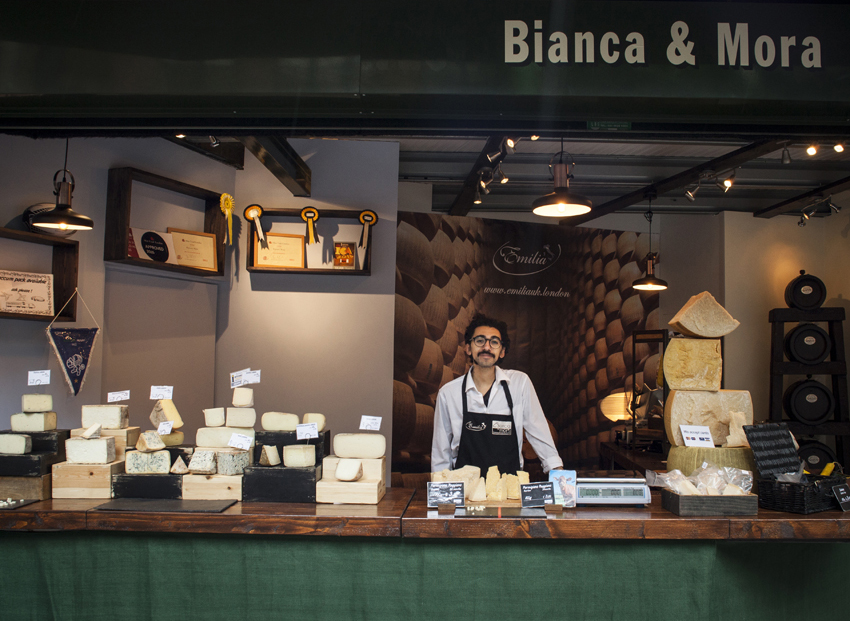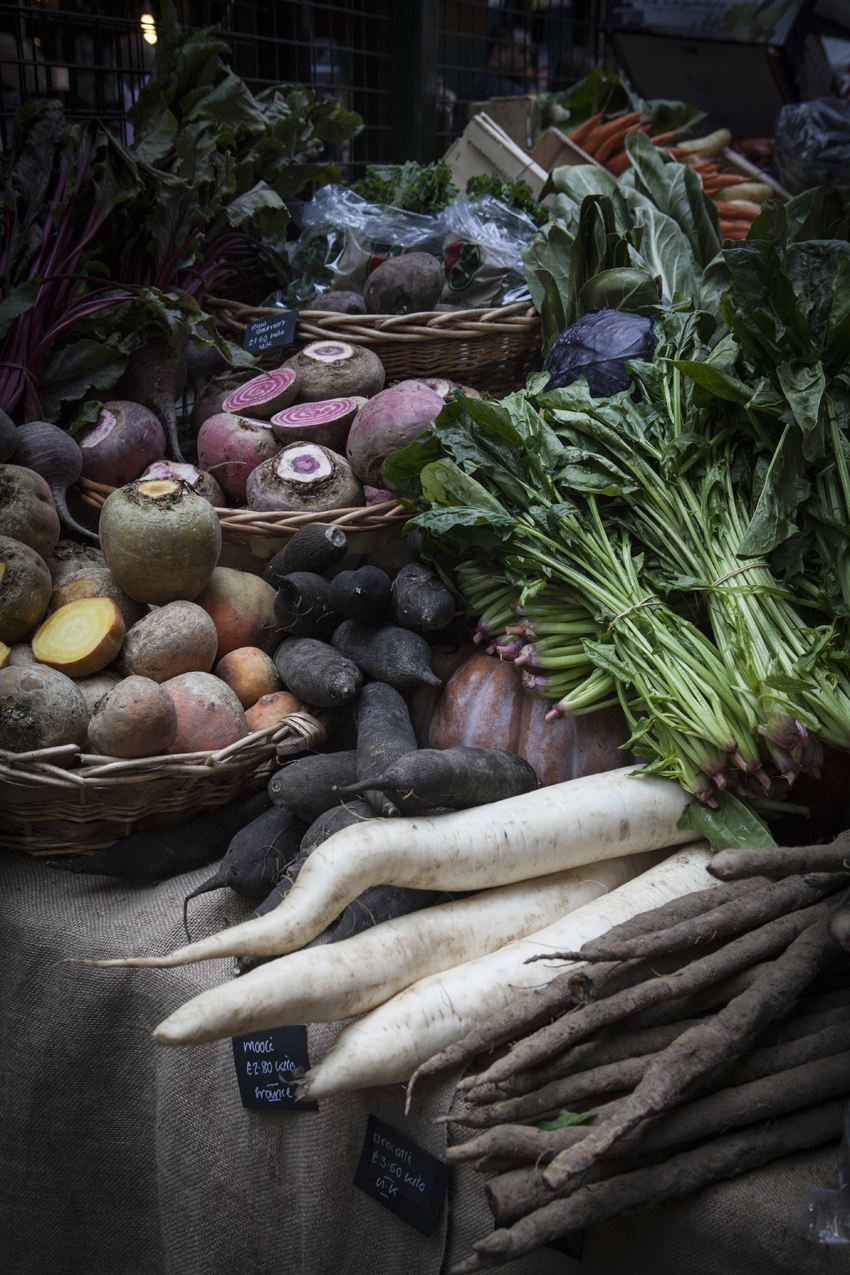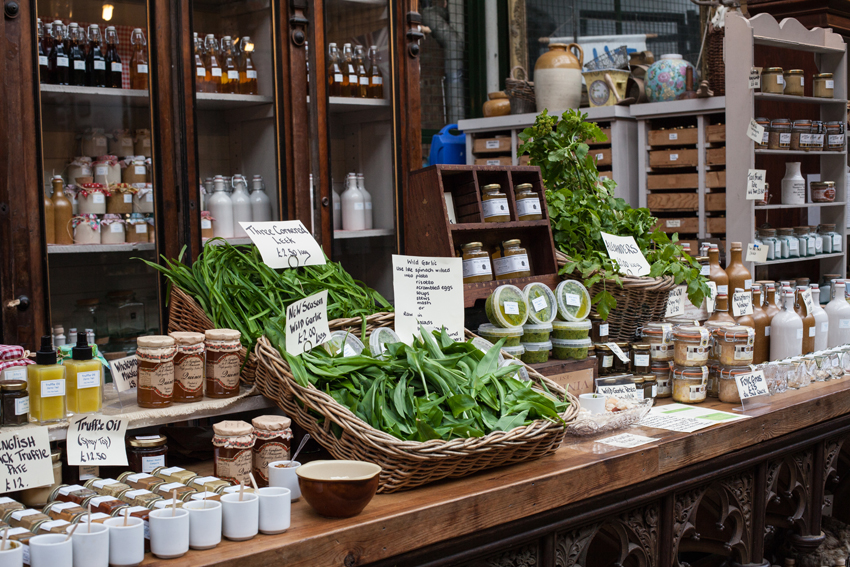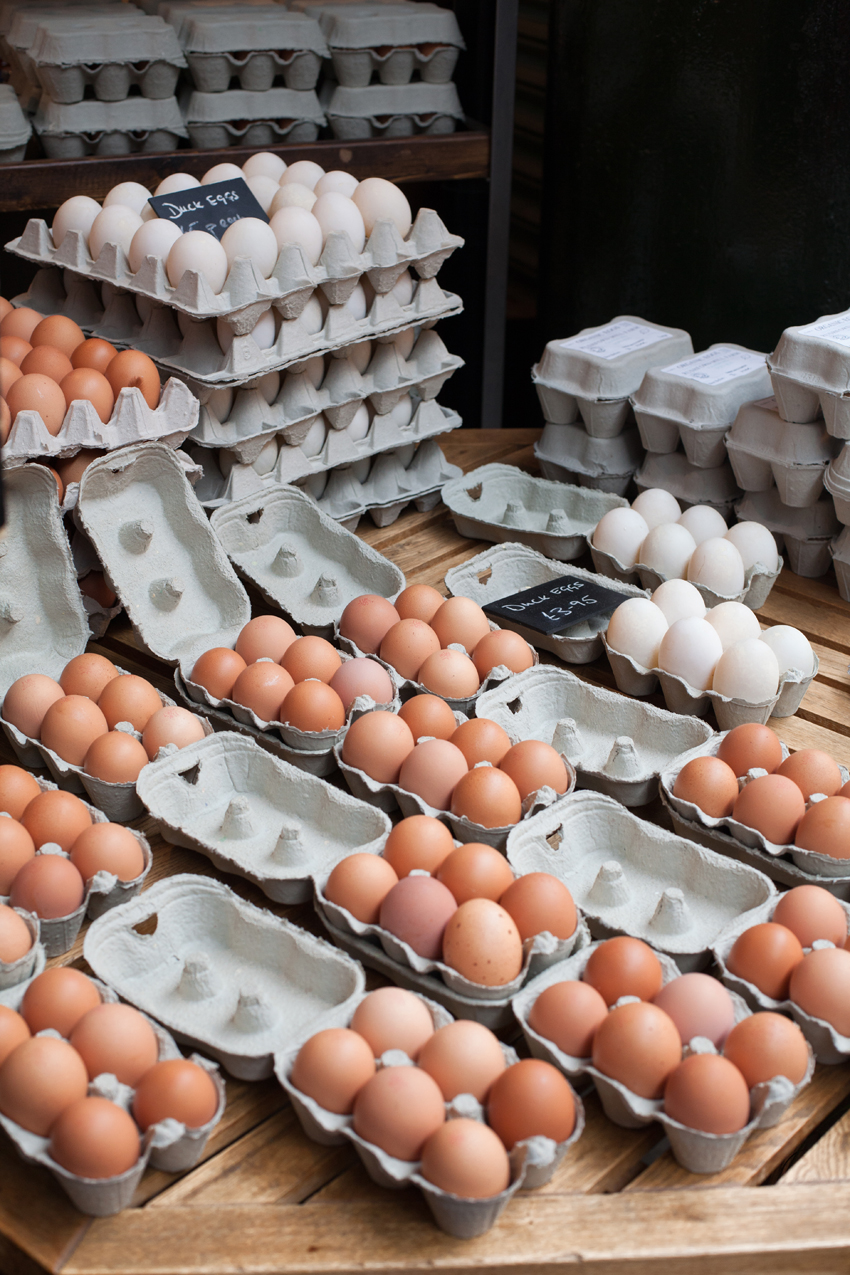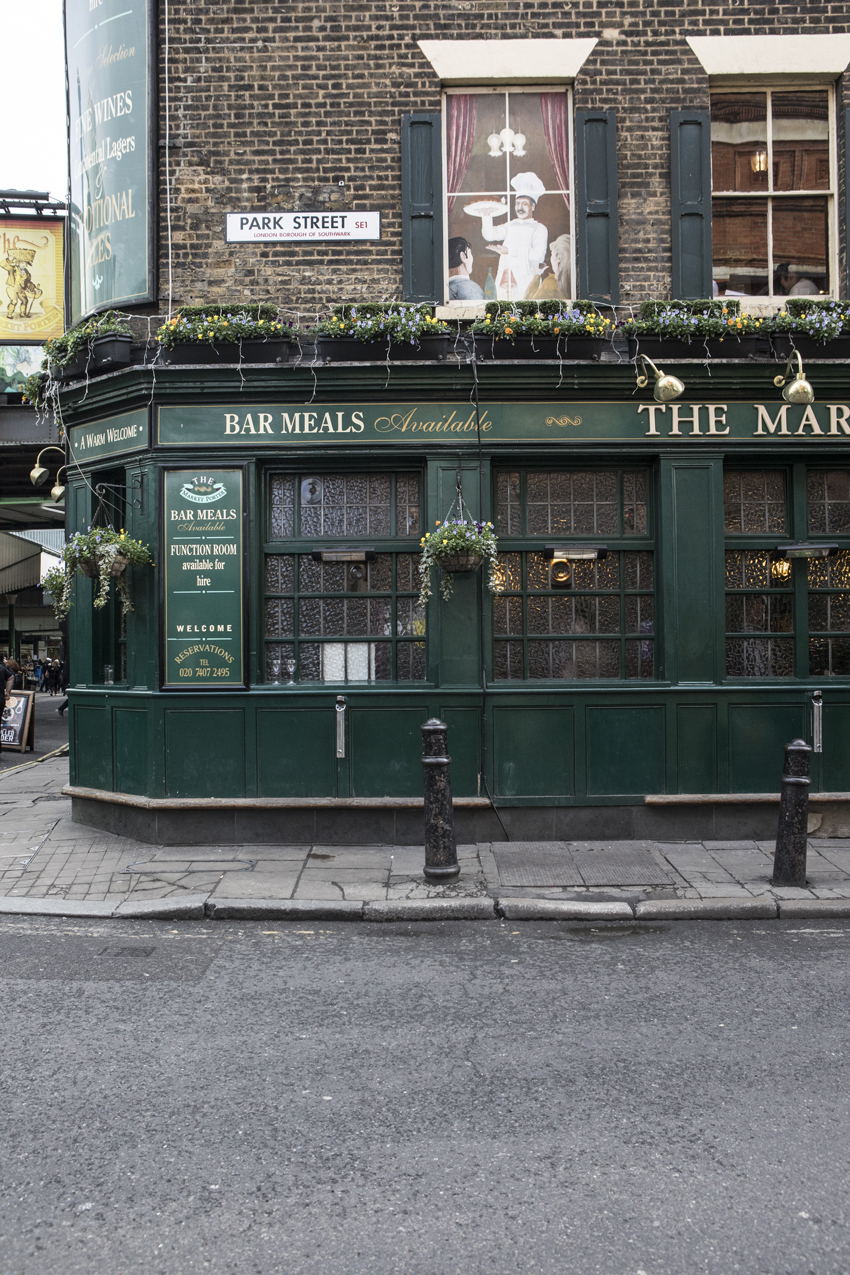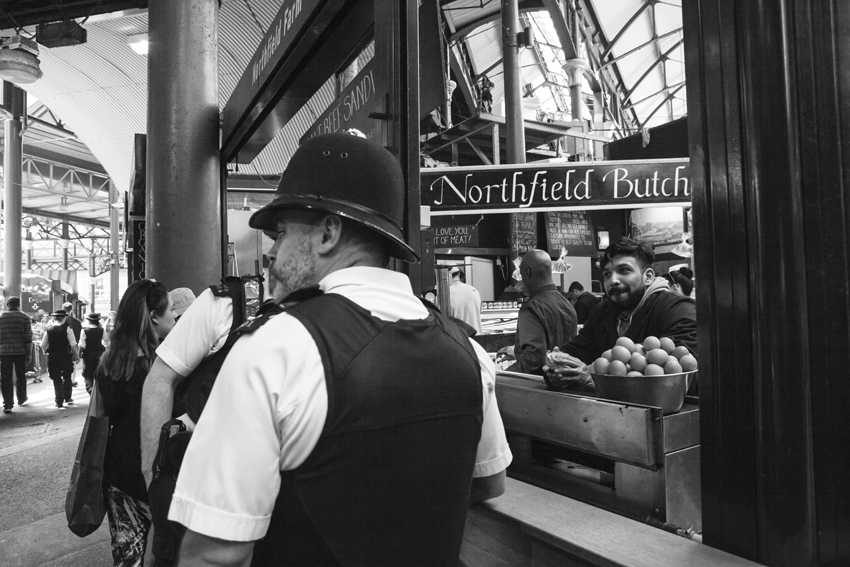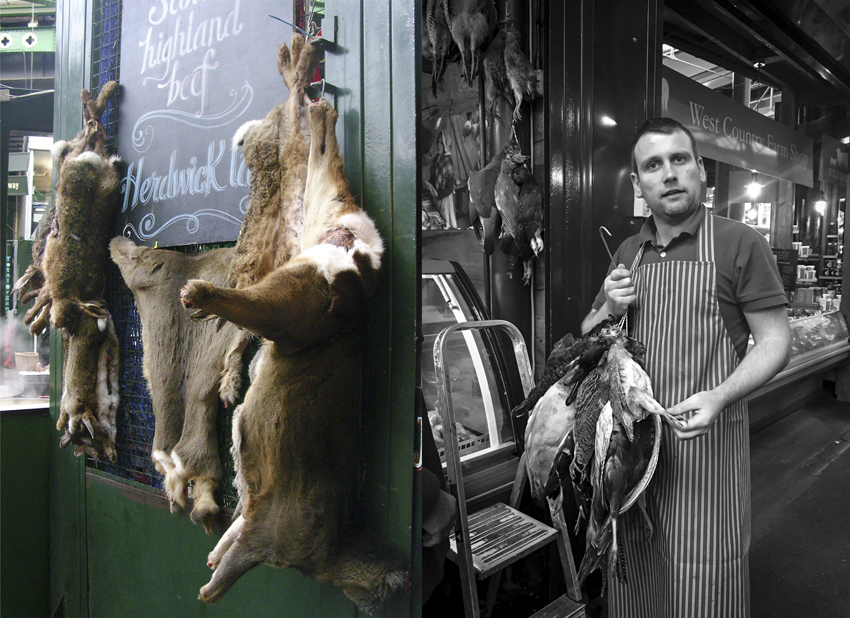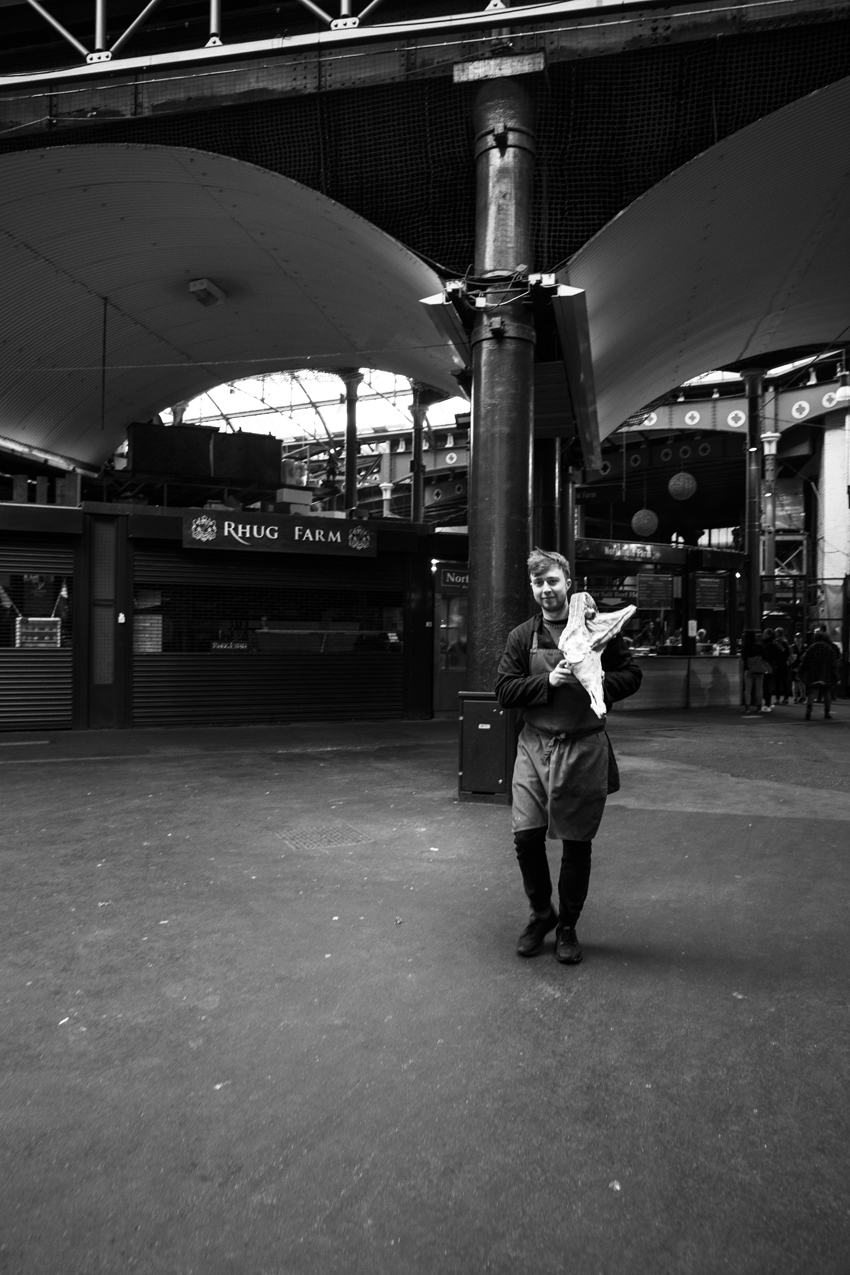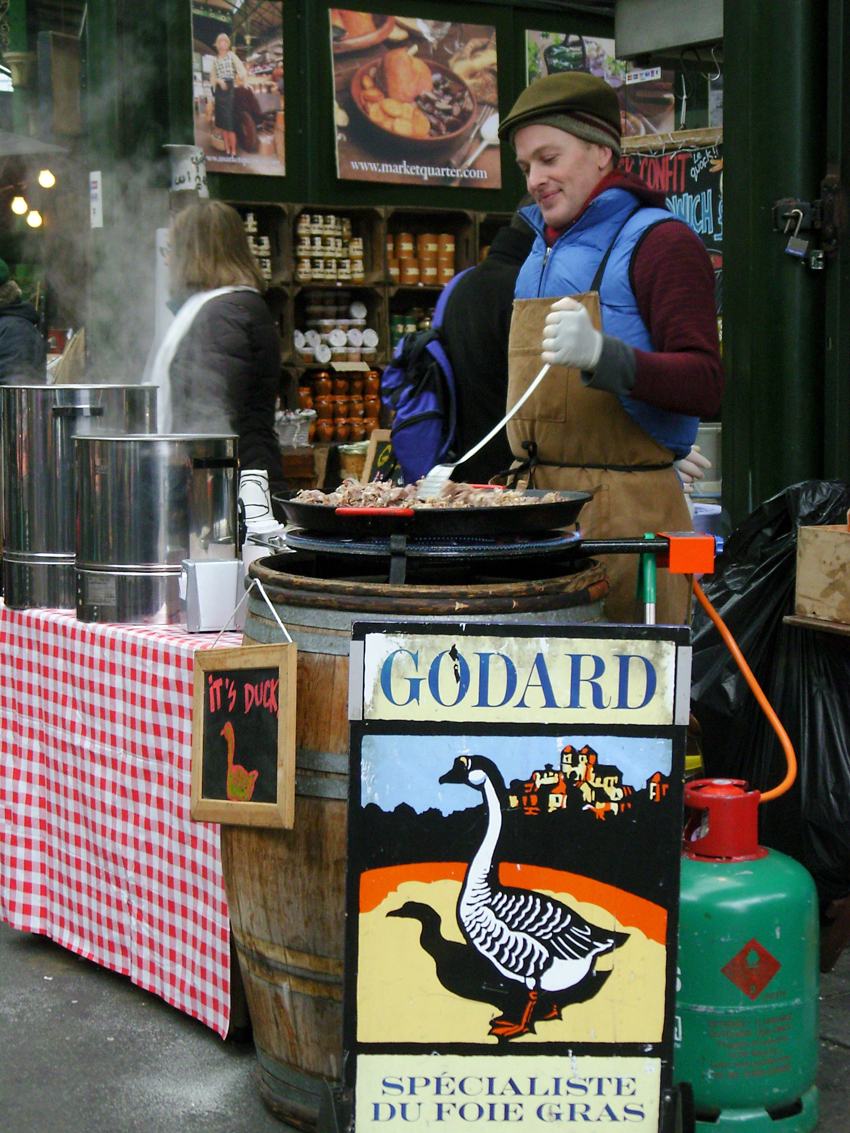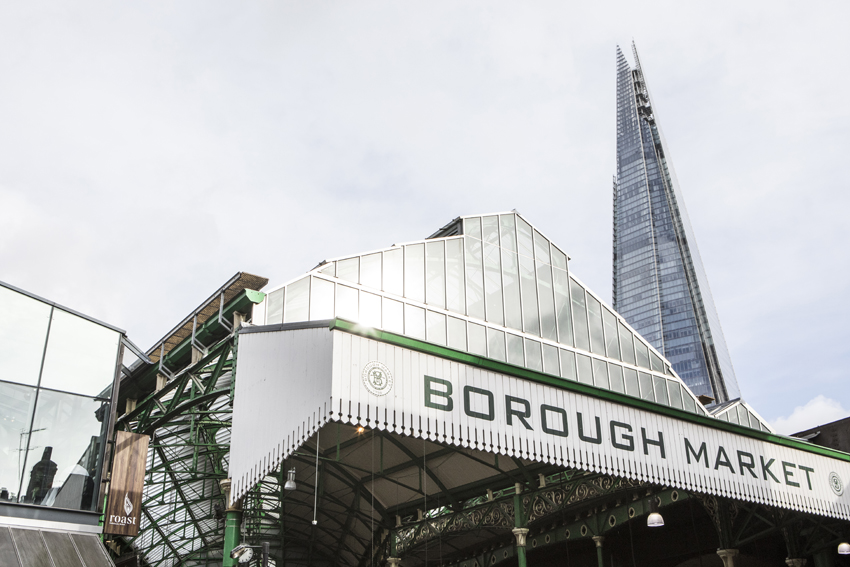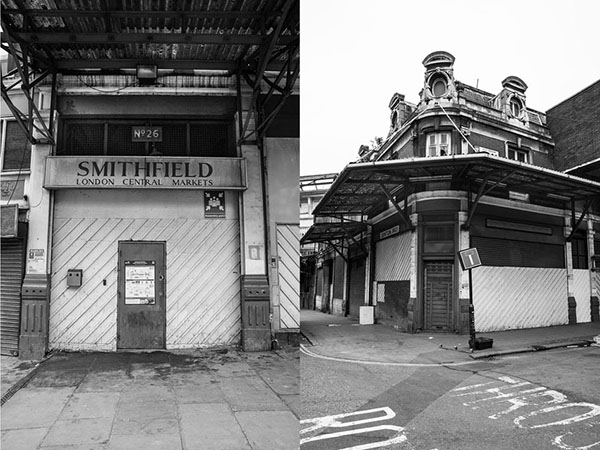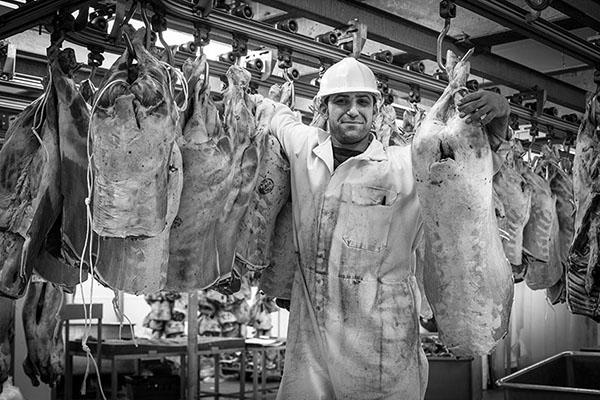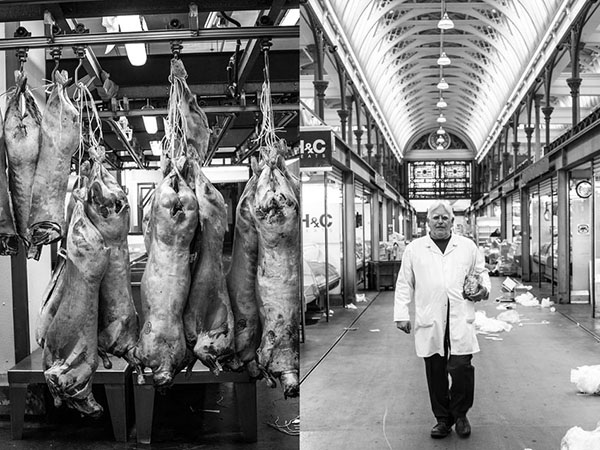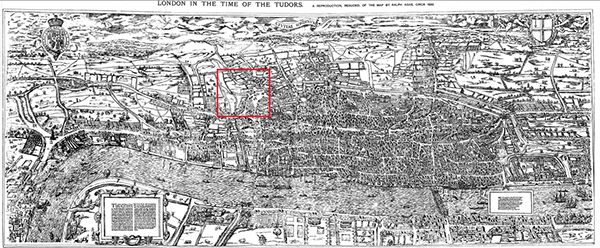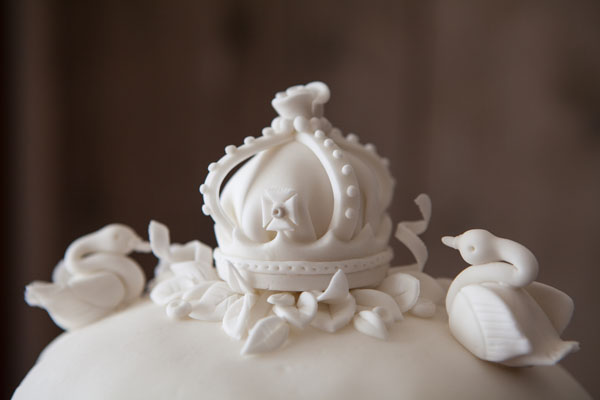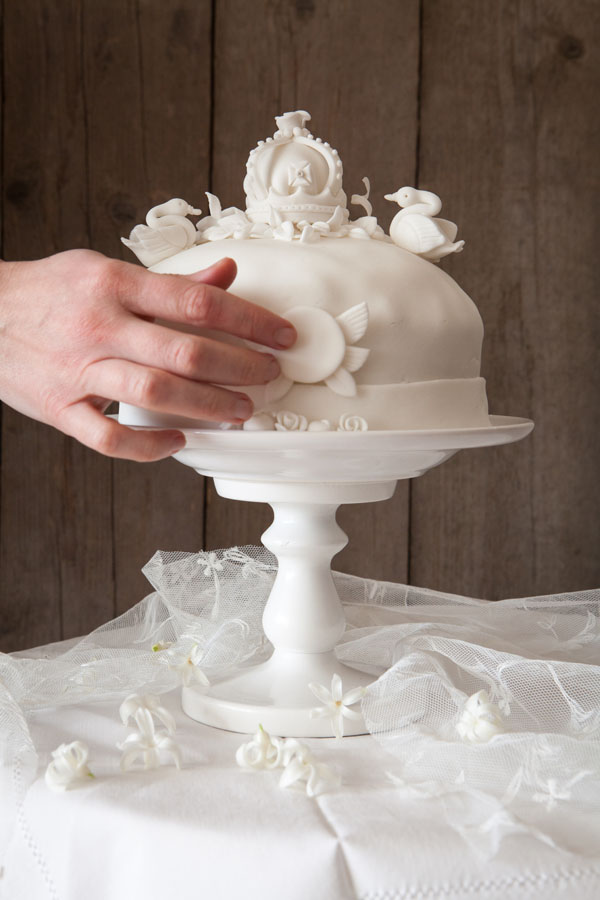The post Borough Market – not just a food market appeared first on Miss Foodwise.
]]>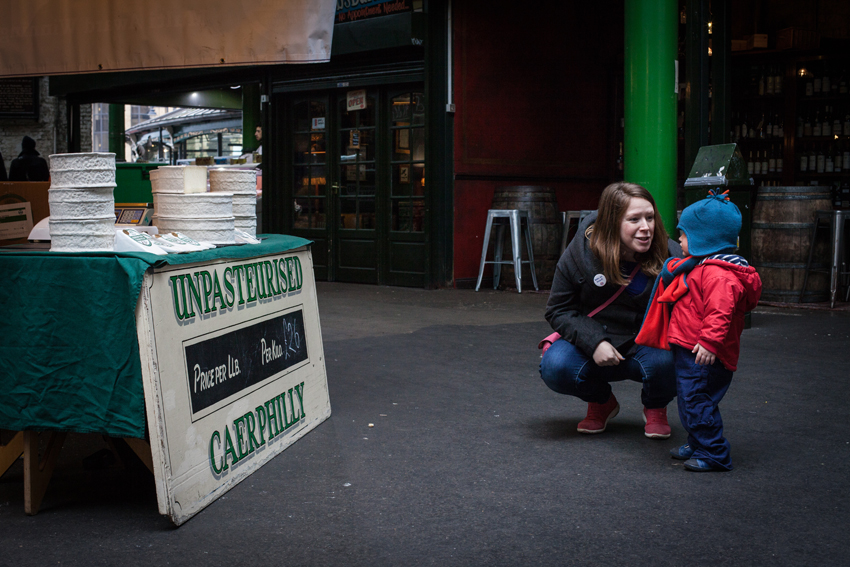
I’ve been planning to write about Borough Market for a very long time, the draft has been in my folder waiting for the right moment, and now the time couldn’t be more poignant. After last weeks terrible events where the market was the victim of a senseless attack I knew I had to write this. Now over a week later, the market is finally opening again and now more than ever the market traders and surrounding restaurants and bars need your support.
Most of the traders are very small often family owned businesses. Loosing a week of custom, and getting over the fact that this beautiful multicultural market was soiled with violence is tough. We all know the way forward it to ‘keep calm and carry on’ so please if you are in London, take the tube to London Bridge Station and do your shopping at Borough Market. Meet there for lunch or dinner or after-work-drinks. It’s safe, probably safer than it has ever been. But mostly, it is a statement, that we will not let terrorism dictate our lives.
On my first ever visit to Borough Market 7 years ago, I never thought that today I would be working for them and writing for their mag and website. Now nearly two years ago I became a photographer for the Borough Market magazine called ‘Market Life’. It is beautifully produced and jam-packed with interesting content. Stories about the market traders and their lives, the produce, the provenance and the events at the market which have become plentiful over the years. There are panel talks, tastings, cookery demonstrations and there even is a Cookbook Club. It is such a community. I’ve worked with many of the market traders, sourcing produce for shoots, they’ve been generous with advise and for some shoots they’ve even been on hand to help me. That is why I was especially shaken by the sadness that happened last week. My first thoughts were with the traders and the people who work tirelessly behind the scenes in the Borough Market office. The people I love to work with.
Borough Market is life, it is hope. It is a place where gender, sexual orientation, colour, religion or political preference doesn’t matter. It’s food, only food. That what keeps us alive, that what we live for, that what brings people together. The market sent out a statement and I want to share with you:
Now more than ever, we need to remind ourselves that what we do here matters. A food market has nothing to do with hate. A food market is about sustenance and wellbeing, pleasure and sharing, companionship and family. That’s why it’s important.
This post was supposed to be about the history of Borough Market, but for now, it is about the present and the future…
If you can not make it to the market but wish to show your support, many traders have an online shop, but there is also a crowdfunding campaign where you can donate to help the businesses and individuals who suffered financial heartache because of the closure. You can find it here: www.justgiving.com/crowdfunding/bmrelieffund
Visit the Borough Market website for updates and to learn about the different market traders and businesses that form part of this rich and beautiful food community: http://boroughmarket.org.uk/
Also see this ‘where to eat’ guide compiled by Ed Smith who like me also works for the market: http://www.standard.co.uk/goingout/restaurants/where-to-eat-in-borough-market-a3557376.html
My personal favourites, while are traders are equally lovely are:
A Bread Ahead donut – best eaten somewhere in a corner, slightly private, to enjoy the full finger-licking experience.
Also there brioche burger buns, large white tin loaf (perfect for summer pudding and bacon sarnies!!), and decent sourdough loaves
Karaway Bakery Poppyseed and coconut and white chocolate bun – I always take these home for our breakfast the next day.
Also their caraway sourdough loaves and mini rolls.
Olivier Bakery for their round milk loaf… so good with plenty of butter!
Flour Station for EPIC English muffins and decent sourdough loaves. They make a mean Chelsea bun too!
Excuisite Deli have a great cured Biltong, Brindisa for spanish cured meats, Bianca e Mora for great Emilia Romagna cheese.
Speaking of cheese, Alsop & Walker sell the Lord London Booby shaped white cheese which is ah-mazing, there is also great cheese from Bath from Bath Soft Cheese Co. Borough Cheese Co for everything cheese and Gorwydd Caerphilly for … Caerphilly of course!
Kappacasein makes a mean raclette and cheese sarnie with cheese from Bermondsey which is just round the corner. And don’t forget all the others and Neils Yard Dairy who has a large selection.
For all things meaty I go to Dom from Northfield Farm who patiently cuts and wraps all the cuts of meat I carry home in my suitcase after working at the market. Go there for excellent beef from their own farm and friend-farms, check out their meat maturing cabinet thingie! Dom is proud of his mutton, and his lamb is excellent too. And if you are feeling peckish after your meat shop, turn around and order a burger at their stall, they are excellent and have long been my favourite in town.
Furness Fish & Game have excellent game and poultry. They usually have a very lush display of fish.
Cumbrian Speciality meats for some Herdwick and other rare breed meats
Gourmet Goat make mouthwatering dishes with kid goat meat
I’m told one of the Borough Market office workers has to bring home a pie from Mrs King’s Pork pies or the spouse at home is very very disappointed indeed. They are very good and award-winning, coming from pie-central: Melton Mowbray
For fishy situations my first stop is always Paul at Sussex Fish. A lovely fellow always in a good mood and always selling smashing fresh fish from his own boat and sustainably caught. He wraps them carefully for me to stock up my freezer at home.
Richard Haward’s Oysters have been my little treat for years, I usually get a pint of Stout across the street in the pub and have my oysters with it, proper old school and VERY good.
Shellseekers Fish and Game are usually where I get my lunch when I work at Borough Market, a quick dressed Dorset crab and a ciabatta from Bread ahead. The most luxurious fast food there is.
There is also an excellent mushroom paté that is so delish and the only thing Paté Moi has been selling for years, made to her own family recipe.
For after work drinks Wright Brothers Oyster and Porter house are your spot for oysters. And why not Fish and Chips at Fish!
Fruit and Veg there are plenty of options so browse the whole market. Turnips, Ted’s Veg, Elsie’s and if apples are your thing then definitely check out Chegworth Valley.
Spices can be found at Spice Mountain, in handy little pots. The local honey man sells a very good honey.
For lunch there are so many options it is hard to pick a few, so have a browse and see what takes your fancy: goats dishes, Indian food, melted cheese sarnies, Balkan bites, burgers, Herdwick lamb wrap, Ethiopan, old school Hobbs Meat Roast, proper Lincolnshire sausage, salt beef bagels and falafel wraps, Sri-Lankan cuisine, British pies… a wonderful mix of cultures! See all the street food stalls here: http://boroughmarket.org.uk/traders/street-food
For a full list of market stalls visit the Borough Market website: http://boroughmarket.org.uk/traders
Good luck to all the traders and people involved with Borough Market!
The post Borough Market – not just a food market appeared first on Miss Foodwise.
]]>The post Smithfield Meat Market – a history and a nomination for the Pink Lady Food photography award! appeared first on Miss Foodwise.
]]>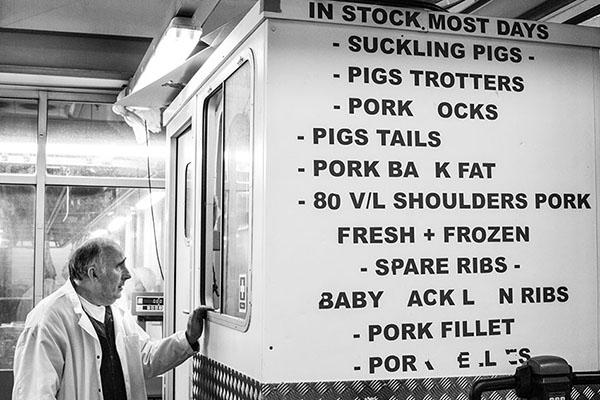 Smithfield Market, 865 years of notorious history of meat, bloodshed, crime and uprising.
Smithfield Market, 865 years of notorious history of meat, bloodshed, crime and uprising.Turning down Sun Street and Crown Street, and crossing Finsbury square, Mr. Sikes struck, by way of Chiswell Street, into Barbican: thence into Long Lane, and so into Smithfield; from which latter place arose a tumult of discordant sounds that filled Oliver Twist with amazement. It was market-morning. The ground was covered, nearly ankle-deep, with filth and mire; a thick steam, perpetually rising from the reeking bodies of the cattle, and mingling with the fog, which seemd to rest upon the chimney-tops, hung heavily above. All the pens in the centre of the large area, and as many temporary pens as could be crowded into the vacant space, were filled with sheep; tied up to posts by the gutter side were long lines of beasts and oxen, three or four deep. Countrymen, butchers, drovers, hawkers, boys, thieves, idlers, and vagabonds of every low grade, were mingled together in a mass; the whistling of drovers, the barking dogs, the bellowing and plunging of the oxen, the bleating of sheep, the grunting and squeaking of pigs, the cries of hawkers, the shouts, oaths, and quarrelling on all sides; the ringing of bells and roar of voices, that issued from every public-house; the crowding, pushing, driving, beating, whooping and yelling; the hideous and discordant dim that resounded from every corner of the market; and the unwashed, unshaven, squalid, and dirty figues constantly running to and fro, and bursting in and out of the throng; rendered it a stunning and bewildering scene, which quite confounded the senses.
Charles Dickens – Oliver Twist, 1838And so were the words of Charles Dickens about Smithfield meat market in his marvellous work Oliver Twist.
England has always been famed for the outstanding quality of its meat. In the 19th century, Smithfield meat market was notorious for its wild cattle that was hazardously driven through the streets of London. The drovers and butchers were apparently as savage as their cattle and murder and rape were no exceptions in these quarters.
Reports of cattle stirred up by drunk herdsmen killing men, woman and children on their way were frequent. Cattle was slaughtered at the site and the streets coloured red with blood.Surrounded by dirty streets, lanes, courts, and alleys, the haunts of poverty and crime, Smithfield is infested not only with fierce and savage cattle, but also with the still fiercer and more savage tribes of drivers and butchers. On market-days the passengers are in danger of being run over, trampled down, or tossed up by the drivers or “beasts”; at night, rapine and murder prowl in the lanes and alleys in the vicinity; and the police have more trouble with this part of the town than with the whole of Brompton, Kensington, and Bayswater. The crowding of cattle in the centre of the town is an inexhaustible source of accidents.Max Schlesinger, Saunterings in and about London, 1853
From 1150,
Smithfield has been used as a market for live stock. It was a large open space on the outskirts of town, it had small open spaces and wooden pens and a broad open street market.
In 1174 Smithfield was described by William Fitzstephen, clerk to Thomas à Becket in his ‘Description of London’, one of my favourite works to learn about Ancient London and its people.
‘In a suburb immediately outside one of the gates there is a field that is smooth, both in name and in fact. Every Friday (unless it is an important holy day requiring solemnity) crowds are drawn to the show and sale of fine horses. This attracts the earls, barons and knights who are then in the city, along with many citizens, whether to buy or just to watch.’
A description of London, ca.1174/1183, translated from Latin.
The ancient map of London ‘Civitas Londinum’ dated to 1561, shows large open fields and cattle pens. The market area is now called ‘Schmyt Fyeld’. During that time the market area had access to the river Fleet so cattle had water to drink and grass to feed on.
Because Smithfield was an open space which was so close to the city centre, it was also used for public executions. William Wallace – known to most as Braveheart after the film – was executed there in 1305. It was also the meeting place to gather for the Peasant’s Revolt in 1381. Executions continued well into the 16th century with Henry VIII murdering Catholics and his daughter ‘Bloody Mary’ burning in excess of 200 protestants. During the 17th century the site became a popular place for duelling and later it turned into a prime spot to pick up a prostitute for the night.
The structure of the market would remain largely the same as in the Middle Ages until a building was erected designed by Victorian architect Sir Horace Jones in 1868. By then the market was in the centre of London instead of in the outskirts, adjoining fields.
We can still see that majestic market building today, and some of its additions from later in that century, but sadly a part of it has been derelict for many decades now.
When I visited the market I was warned by Londoners that some of the butchers were still cheeky buggers and they weren’t kidding. On my short walk around I got talking to one of them, I took his picture, asked him if I could use the image, and he gave me his phone number and told me to call him some time.
The market was at its end of trading that day when I visited, meat was being packed up and carted away in supermarket trolleys, leaving it to look nearly as rough and dirty as it must have looked centuries ago.
It is a historic place, there has been a cattle market here for 865 years, and I hope it will remain here for centuries to come. It’s extraordinary that after the relocation of Billingsgate Fish market, Covent Garden and Spitalfields market, Smithfield market is still holding strong.
It is a heritage site, and with so many historical important places being demolished in London today – think the London Wool and fruit exchange in Shoreditch – we have to hang on to this one while we can.
 |
| Looking up in the meat market building |
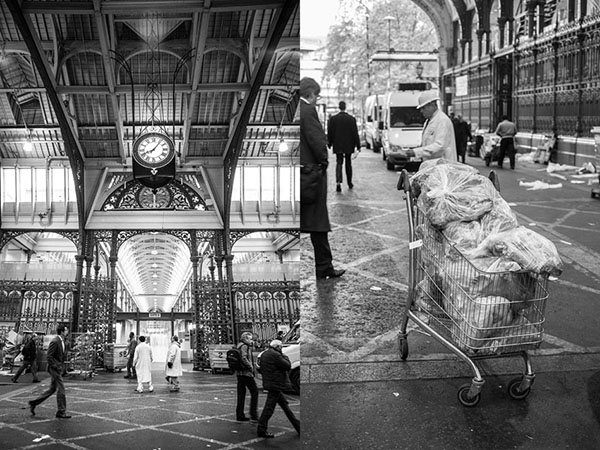 |
| Supermarket carts are used to move the meat and are scattered around everywhere |
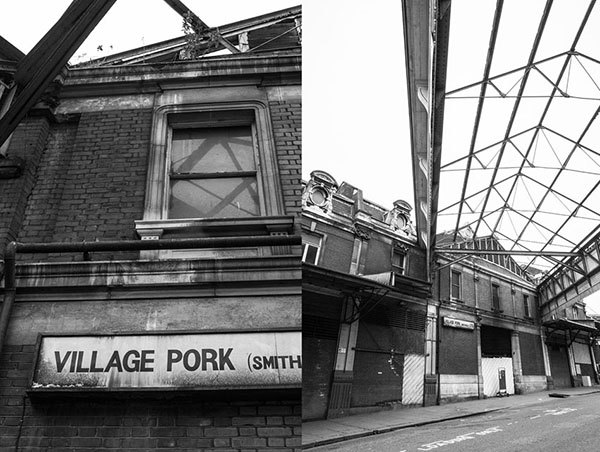 |
| though crumbling, still a special place |
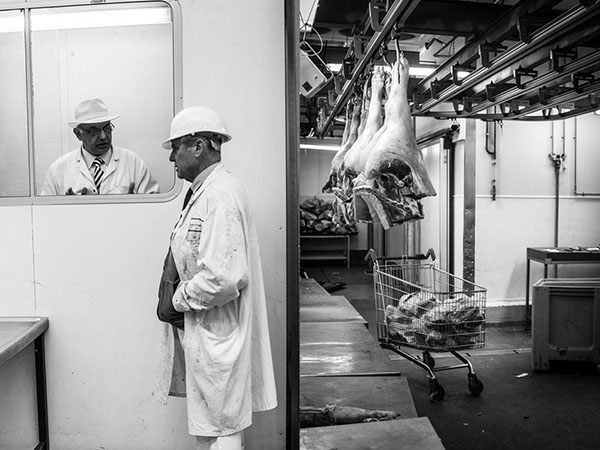 |
| Butchers chatting during the clean-up of todays market day |
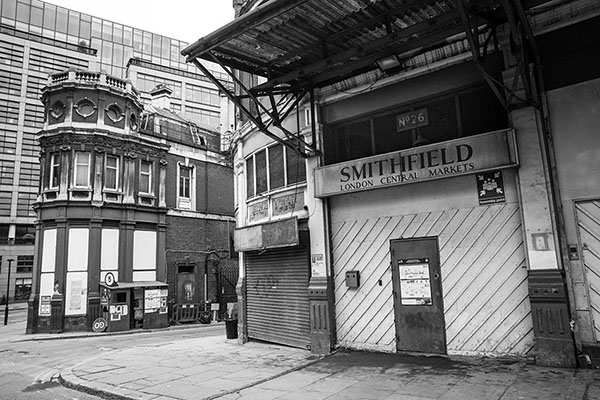 |
| One of the loading gates |
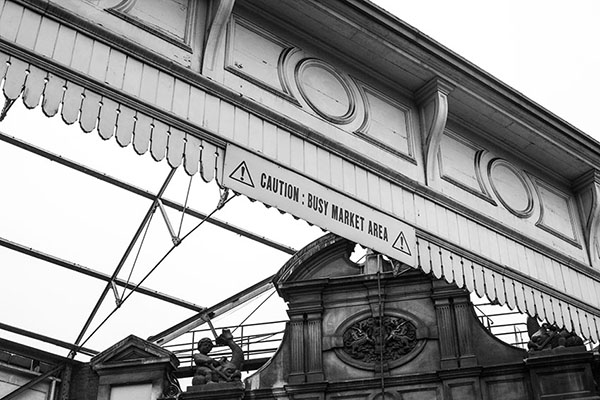 |
| Lorries are driving on and off with loads of meat |
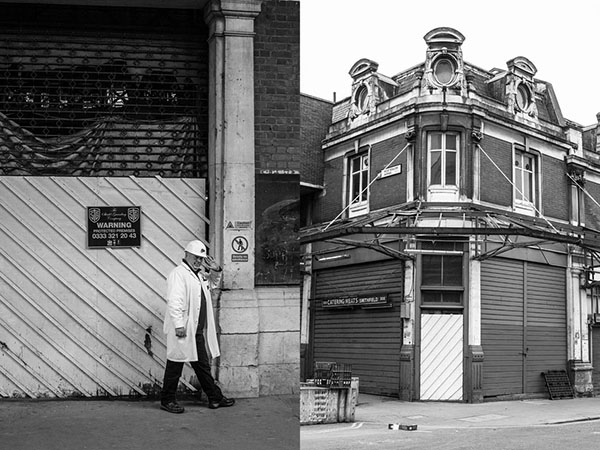 |
| The butchers don’t mind posing a little for my camera |
 |
| Part of the market in its derelict state, still waiting to be renovated and repurposed |
Dear readers, the above image from Smithfield market has been shortlisted in the prestigious Pink Lady Food Photography Awards in the category ‘Food For Sale’ for the People’s choice award. If you like my work, I would be super grateful if you would vote for my photograph!
Do leave a comment, I love hearing from you!
The post Smithfield Meat Market – a history and a nomination for the Pink Lady Food photography award! appeared first on Miss Foodwise.
]]>The post The intriguing Twelfth cake appeared first on Miss Foodwise.
]]>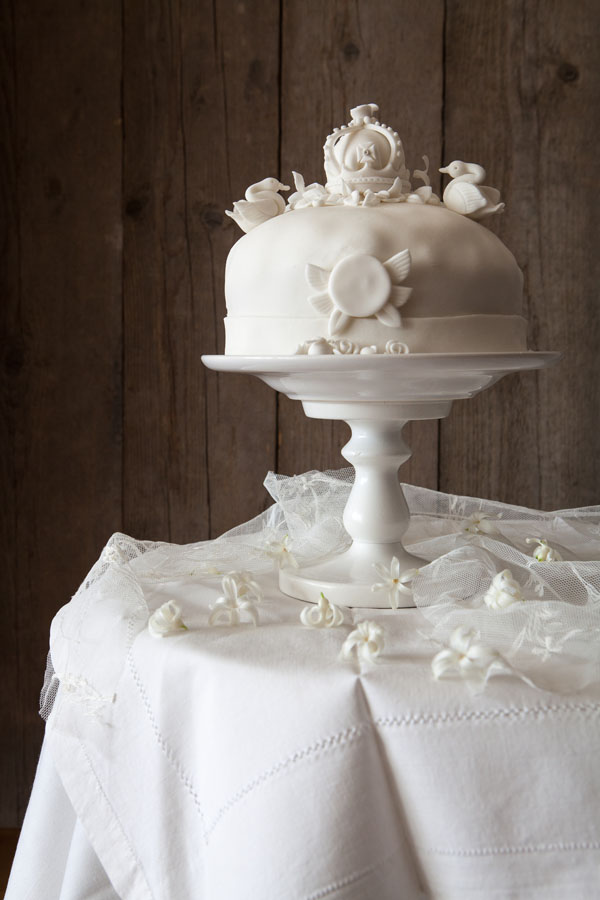
The Twelfth cake is to me one of the most intriguing of cakes in the British cuisine. The cake is traditionally baked for the feast of epiphany or as the name already reveals – the twelfth night of christmas. But baking a cake for epiphany isn’t a custom in Britain alone, in other European countries and in my home country Belgium we have the ‘3 kings cake’ (driekoningen taart) or the ‘Galette du Rois’ which is a frangipane tart with puff pastry concealing a much coveted bean which will make you king for the day. The 3 kings cake is sold with a paper crown so all is in order for the coronation of the lucky finder of the bean. At some time however it was the fashion of concealing tiny porcelain babies and nativity figures in the cake, a custom my mother in law tells me is still practiced by the bakery in my neighbourhood. I remember as a child, I’ve never had the pleasure of finding the bean which would make me king, this annoyed me very much as a little girl.
In Britain the tradition was to hide a bean and a pea in a plum cake, the bean would crown the king and the pea would crown the queen. The Twelfth cake would contain spices like cloves, mace, nutmeg and cinnamon along with dried fruits like raisins and candied orange or lemon peel.
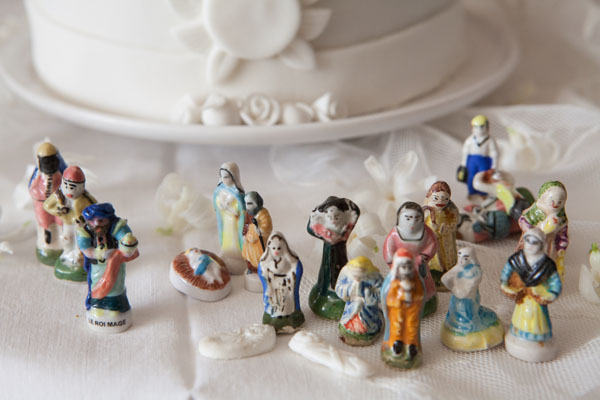 |
| Antique 3 king cake figurines, imagine biting into one of those! |
The earliest printed recipe for a Twelfth cake dates from 1803 and can be found in John Mollard’s the Art of Cookery. However, references to the custom of the Twelfth cake and the celebrations surrounding it can be found as far back in history as the 16th century and it is very possible that the tradition has been around for much longer. In a early Tudor manuscript which is kept at the Bodleian Library we find a passage about wassail cakes, which are believed to be heathen Twelfth cakes. Wassail comes from the Old English ‘Waes hale’ which most likely means ‘be whole’ or be healthy, like a kind of frase you say while making a toast. We can also find recipes for Wassail which is a type of mulled cider traditionally drunk while Wassailing, meaning a tradition of awakening the cider apple trees while singing and drinking.
In 1648, Robert Herrick’s poem ‘Twelft Night: Or King and Queen describes the celebrations of the Twelfth night beautifully. Here he speaks of a cake full of plums (plums meaning raisins rather than actual plums, see plum pudding) And goes on to describe the election of a king and queen after discovering a bean and a pea. And he mentions a gentle Lamb’s wool and the spices that should go into it to give to the king and queen for wassailing. The Lambswool is a Wassail drink made of ale or cider.
A
few years later in 1659/1660 Samuel Pepys writes in his diary on januari the 6th
of a ‘Brave cake brought us, and in the choosing, Pall was Queen and Mr.
Stradwick was King.’ Which shows that there were celebrations in the city as well as in the country, though there is no word of wassailing in Pepys lines.
During the mid 1700 up until the late 1800 Twelfth cakes were very fashionable and often decadently decorated showing elaborate scenes and figurines crafted out of sugar or wax. Crowns seem to have been the most popular decoration and usually white icing would have been used which back then was a sugar paste called gum paste which was shaped into wooden molds. We can find illustrations of large Twelfth cakes set in a scene of feasting in the Satires Collection of the British Museum, and we also find Victorian Twelfth night cards with humorous illustrations of characters. The day the Twelfth cakes, large and small would appear in the pastry shop’s windows in London a large number of people would gather in front of them to capture a glance of these most fashionable cakes. The Victorians enjoyed the Twelfth night celebrations to the full and the pastry shops sold the Twelfth night character cards with the cakes. Each guest of the party would then have to choose a card which had a verse describing the character underneath. One had to read the verse aloud and pretend to be that character until midnight. We can find an excellent description of these events and many more surrounding Twelfth day and Wassailing in ‘The Every-Day Book’ by William Hone. In the country the celebrations surrounding the twelfth night would still be the more heathen Wassailing, the twelfth night celebrations in London were considered rather vulgar by outsiders.
Although we will not easily find Twelfth cakes in the shops today, the tradition of wassailing is still very much alive with country feasts all over Britain. People come together to sing, drink wassail, eat plum cake and be merry. Once again it is the ancient and probably pre-christian tradition which has withstood the test of time. In my opinion because these traditions are more entwined with nature, the change of the seasons and the marking moments in the farming year that come with it.
What about you? Did you go wassailing or did you bake a Twelfth cake or another cake from your corner of the world?
This recipe is basically Mollard‘s recipe translated to modern day, Mollard doesn’t give measurements of the yeast and milk, which I had to test to give to you. Also the recipe of Mollard is three times the measurements given here, which means that this would have been a massive Twelfth cake!
What do you need
- organic white wheat flour, 500 g
- dried yeast, 2 teaspoons
- lukewarm milk, half a cup
- unsalted butter, softened, 75 g
- raw cane sugar, 100 g
- currants or sultanas, 340 g
- Candied orange peel or lemon, to taste
- Cinnamon, 2 teaspoons
- Cloves, pounded, 1 teaspoon
- a generous pinch of mace
- a pinch of nutmeg
- cold milk, 1,5 cups
Method
Add all the flour to a bowl and make a well in the middle, add the sugar in the well followed by half a cup of warmed milk.
Add the yeast to the milk and stir so the yeast, milk and sugar are mixed. After a few minutes the yeast will start bubbling and will look frothy.
Now add the butter and spices followed by 1 cup of milk, mix well and then add another cup of milk before adding the dried and candied fruit.
While adding the currants and peel you might need to add an additional half a cup of milk, especially if you’ve started out without soaking the currants.
Once the mixture has come together in a slightly wet dough, cover and let rest for 2 hours or more if you have the time.
Line a spring form or wooden baking hoop with baking paper and add the dough.
Put in a preheated oven at 200° C for 1 hour.
If you see that the top is browning too much, cover it with tinfoil to prevent a burnt crust.
Leave to cool in the tin or hoop and ice and top with the most decadent decorations you can manage to create. I used fondant and marzipan to create these decorations, I only need some pointers in evening out my icing!
This cake is more like a bread and reminds me of the German Stollen, but dryer.
You might also enjoy
Lambs Wool
Ypocras
Plum pudding
Cranberry and apple crumble
The post The intriguing Twelfth cake appeared first on Miss Foodwise.
]]>
